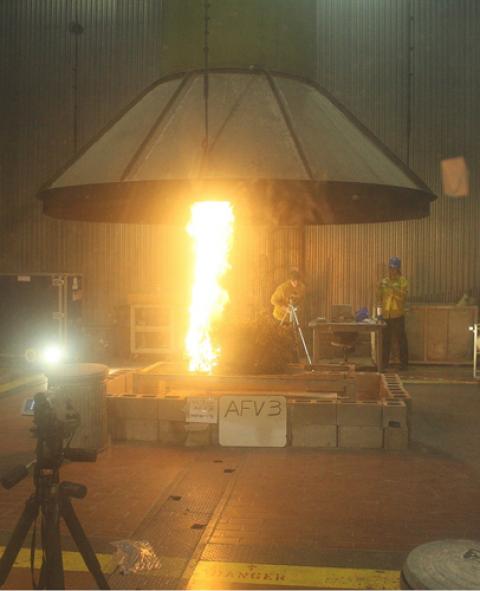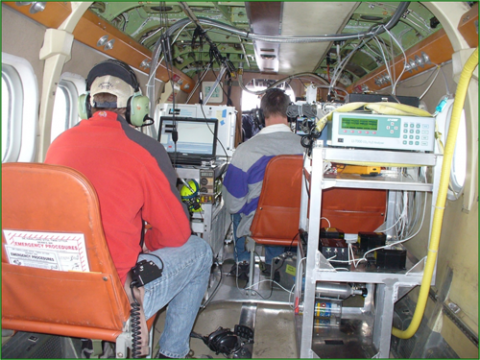Laboratory and Airborne Experiments to Characterize Emissions from Prescribed Burning in the United States
Prescribed fires are fires that are intentionally ignited to meet specific management objectives such as wildfire hazard reduction or ecosystem restoration. In a typical year, over 2 million acres of forest and rangeland are treated with prescribed fire in the lower 48 states. Smoke from prescribed fires can be a major source of fine particulate matter (PM2.5) and may contribute to the formation of ozone. Both pollutants have negative impacts on public health and are regulated according to federal National Ambient Air Quality Standards. The RMRS Fire, Fuel, and Smoke Science Program’s Smoke Emission and Dispersion Team participated in a large multi-institution, multi-phase research project to develop new tools for estimating and managing local/regional air quality impacts of prescribed burns. A major focus of the project was characterizing the air emissions from prescribed fires. This was accomplished through both laboratory experiments conducted in the Missoula Fire Sciences Laboratory’s combustion chamber and airborne field measurements of smoke from operational prescribed fires in the southwest and southeast U.S.
The laboratory phase of the project measured emissions from the combustion of vegetation commonly managed by prescribed fire on military bases in the southeastern and southwestern U.S. Over a period of three weeks, 71 fires were sampled in the Fire Lab’s combustion facility. The laboratory experiments were led by University of Montana Profesor Bob Yokelson and also involved researchers from the U.S. Forest Service's Pacific Southwest Research Station; University of Colorado; Department of Energy's Pacific Northwest National Laboratory; University of California, Riverside; and the National Oceanic and Atmospheric Administration's Earth System Research Laboratory. The Smoke Emission and Dispersion Team measured aerosol emissions (PM2.5, organic carbon, elemental carbon, and aerosol elemental content), constructed fuel beds, and analyzed fuel chemistry.
The project’s laboratory experiments were followed by field experiments that deployed atmospheric chemistry measurement equipment on a U.S. Forest Service Region 4 Twin Otter aircraft that sampled the emission, transport, and chemistry of smoke from prescribed burns. The field experiments were conducted in four regional phases based in California, Arizona, North Carolina, and South Carolina. The field project was led by University of Montana Professor Bob Yokelson and included researchers from the U.S. Forest Service's Pacific Southwest Research Station; the Department of Energy's Pacific Northwest Laboratory; Colorado State University; California Institute of Technology; and the University of Manchester. During the airborne experiments, the Smoke Emission and Dispersion Team conducted measurements of fire emissions of aerosol (PM2.5) and gases (CO, CO2, CH4 and C2 hydrocarbons) and meteorology.
The experiments have provided the most comprehensive measurement of biomass burning emissions to date and will greatly improve the representation of smoke in regional air quality models and global chemistry-climate models. Many of the results have been incorporated into the Fire Lab’s Wildland Fire Emission Inventory as well as two global biomass mass burning emission inventories: Fire Inventory from NCAR (FINN) and the global Fire Emissions Database (GFED4). The project has resulted in the publication of over 20 peer-reviewed scientific publications.
Photo 1: Experimental fire studied in the Fire Lab’s combustion chamber.
Photo 2: Airborne Laboratory. Gas and particle measurement instruments and flight scientists on the U.S. Forest Service Region 4 Twin Otter aircraft.

